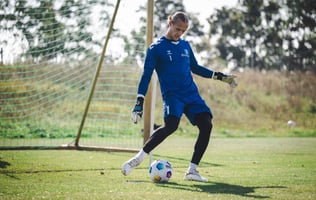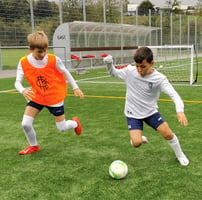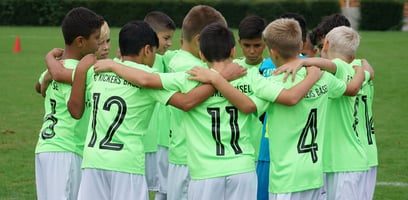Utilise modern training methods to take every football goalkeeper to the next level. Basics of...
Two-footed goal shooting training at any age
Goal-kicking training inspires players of all ages and can lead to effective improvements at any age - from football kindergarten to juniors to the professional level.
Age-appropriate goal-kicking training with both feet
Goal-kicking training is fun for all players. From kindergarten to the professional level, goal kicks are characterised by joy and high motivation. Effective goal-kicking training takes into account the different development stages of players. For children and juniors, goal-kicking training can be organised in a playful way to promote the joy of football and ensure intensive repetition. With simple exercises that allow players to shoot with both feet, they can learn to shoot with both feet from an early age. At kindergarten age, the focus should be on a lot of success, fun and basic movement sequences. Simple goal kicking forms such as simultaneous shooting at a large goal or a goal kicking round are ideal to ensure that all children practise at the same time and to minimise waiting times.
As the players get older, goalkeeping training can be made more demanding and closer to the game. Goal shooting training offers greater challenges, integrates time and opponent pressure and still ensures that the players have many shots on goal and a sense of achievement. Examples include the shot clock, in which a goal must be scored after a few seconds, or the 1-on-1 with a subsequent goal finish or counter-attack option for the defender. Two-footedness remains a key issue for juniors and adults to enable players to react flexibly in different game situations.
Goal shooting competitions and goal shooting training in game forms
Goal-kicking competitions are an excellent way to provide additional motivation during training and to awaken the players' ambition. Small competitions can take place in any age group and increase the speed of the exercise. A classic competition is the goal-scoring race, in which players shoot at the goal in quick succession and receive points for hits. Precision and speed can be encouraged with scoring zones and time limits and rewarded with additional points.
Goal-kicking training can also take place in small-sided games by awarding bonus points for long-range shots or two-footedness. The many goal-kicking actions in small-sided games lead to game-orientated learning of goal-kicking technique. It is important that all players, regardless of their ability level, are involved and have many successful shots on goal.




